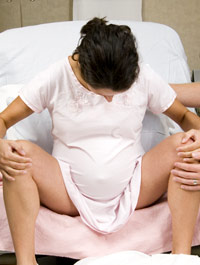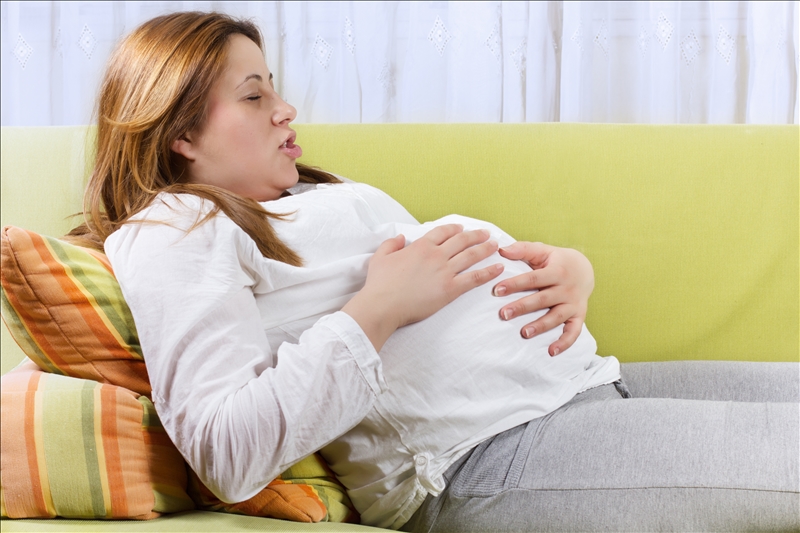What birthing positions will best ease my pregnancy labor pains?
Here’s the truth: natural labor will hurt. Anyone who tells you something different is trying to sell you something that won’t work. That being said, many options exist to help ease your labor pains—including yoga positions. Birthing positions method such as the Bradley or Mongan methods can help reduce pain, as can the actual position you choose to give birth in. Here’s another truth: not all birth positions are created equal. In fact, some naturally use gravity’s force to speed labor thereby making labor shorter and less painful. One position can additionally help relieve back pain if your baby is in a posterior position. Let’s take a look at several positions that can create a more enjoyable birth experience.
Squatting
This may seem strange to many women, but it’s been a preferred method to ease labor pains for centuries. Some of the earliest art depicting birthing positions shows women squatting. This particular position capitalizes on gravity’s ability to pull your little one through the birth canal while you push. In essence, gravity is a silent partner helping to speed your labor. Use a birthing ball to support your squat—this will leave your back available for comforting massages from your partner, doula, or midwife. Squatting can be tough on the thighs, so start doing those daily lunges now!
Semi-squatting
In this situation, your partner supports your upper body by placing his (or her) arms under your armpits; their legs brace your legs, essentially creating somewhat of a chair. The advantage to this placement is that you increase gravity’s pull; however both you and your partner need the strength to pull this one off. And in the position, there’s not an option for back massages. The nature of this scenario though opens the pelvis and encourages quicker descent down the birth canal. The quicker the descent, the shorter the labor.
Sitting
Sitting on a ball or chair can help to open the pelvis. Sitting backwards on a chair is actually preferable, surpassed only by a birthing ball, if one’s available. Most doulas and birthing centers will have available balls, and an increasing number of hospitals now offer them, recognizing their value during the birthing process. Sitting is a great state for couples; your partner can massage your back or hold your arms to help you navigate your way through contractions and pushing. Many women also find hip circles on the ball help open to the pelvis and ease labor pains.
Hands and Knees
If you’re experiencing back pain during this time, your baby may be in a posterior position. This means that his or her head is pushing against your bones, causing additional pain during labor. Kneeling on your hands and knees can help relieve some of this pain. From here you can ease yourself back into yoga’s child pose. This gentle stretch can open the pelvis, creating more room for your baby’s journey. You can also try yoga’s cat and cow stretch to release tension. With this posture however actually delivering a baby can be more difficult—so it is best used in conjunction with another technique.
Unless you have no option, avoid giving birth on your back. Standard hospital beds create a gravity-neutral position which means the baby has a harder time descending and you have to push harder (and we all know the consequences of pushing harder). Midwives are typically comfortable delivering in any position you’d like to deliver in; OBs may be less comfortable. It’s important to discuss your options and preferences with your healthcare professional prior to giving birth. Such a discussion ensures that everyone will be on the same page when it’s most important. And don’t be afraid to use Newton’s discovery to your advantage while giving birth; the more you use gravity the sooner you’ll be able to meet your little one. Have a look at this article for more detailed information.
[lamoud_Pregnancy_Calculator]My content[lamoud_Pregnancy_Calculator]





